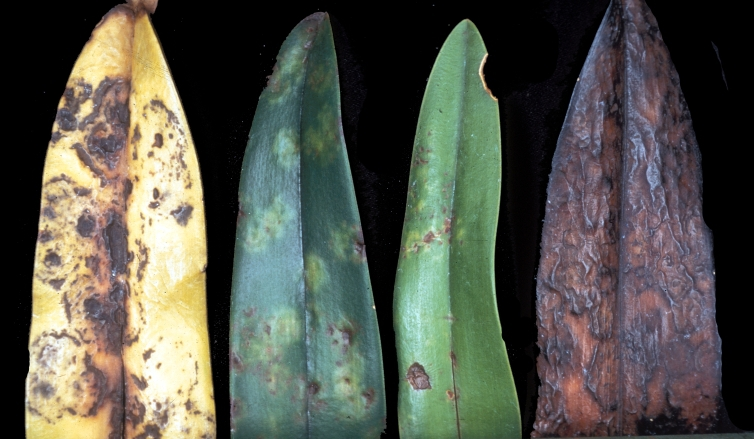Houseplants give beauty and joy, variety, color, emphasize the style or interior design of houses, offices and restaurants. But unfortunately, houseplants can be infected with pests and diseases. To save the plant, you need to determine as soon as possible what it is sick. Drying, decay or rot of plants can be caused by various diseases, such as powdery mildew, virus, rust, gray rot, rot of bulbs and roots, dropsy, anthracnose, blackleg, leaf spot. The main task of the gardener is to detect in time, identify the disease, quickly begin to apply appropriate treatments that will ensure success in further care.
There are infectious diseases (gray rot, powdery mildew) and non-infectious (stem and root rot, wilting of the lower leaves, yellowing, leaf spot, incomplete opening and premature drying, flower fall).
The causative agents of infectious diseases are bacteria, fungi and viruses. To prevent infectious disease should be strictly adhered to watering, temperature, humidity, light.
Non-communicable diseases usually occur due to improper care. Manifested on one copy and do not spread to others.
Powdery mildew is a fungal disease caused by various types of superficial fungi. Manifested in the form of a white powdery mildew both on the surface of the leaf and under it, the stem or bud of a flower.
Powdery mildew is found on many houseplants, as well as on open ground plants. Growth in infected plants with powdery mildew is slowed down, the leaves are deformed and twisted, dry up and fall off prematurely, the plant loses color, the buds do not open, the flower does not bloom. Most often, this disease affects plants such as roses, gerberas, kalanchoe, begonias, violets and others.
Hydrocephalus or edema – this disease is not caused by fungi, viruses or bacterial diseases, but rather by improper care. Hydrocephalus does not infect other plants.
Watery spots appear on the lower part of the leaves, which turn into brown growths. The most vulnerable to dropsy: hibiscus, citrus, kalanchoe, ficus, and orchids.
Anthracnose is a plant disease caused by the fungi Colletotrichum, Kabatiella, Gloeosporium. The disease most often affects coffee, grapes, currants, strawberries, cucumbers and citrus fruits and others. Anthracnose infects weakened plants that have external damage, beetle spores are transmitted with infected seeds, plant debris and spread by raindrops, wind and insects.
Rust on plants is a harmful common disease of many plants caused by fungi Phragmidiumili, Puccinia graminis P. sorghi R. triticina, Uromyces betae, Melampsora liniusitatissimi. The most common diseases are: rye, sunflower, corn, raspberry, pear, apple, sugar beet, gooseberry, currant, houseplants, this disease is very rare. On a plant outgrowths of various form and the size from which at cracking “rusty” powder, spores of a fungus pour out are formed. Manifested on the leaf surface of orange-brown bumps, and on the reverse side of the leaf you can see growths, oval or round. Gradually the spots grow into stripes, the leaves turn yellow and fall off.
Gray rot
Fungal disease. The causative agent is the fungus Botrytis (Botrytis cinerea pers). Refers to the so-called wound parasites. The infection spreads mainly through the air and in contact (when caring for plants and during fruit collection).
Conidial plaque is “sprayed”, also carried by drops of water. Mass remains of small black sclerocytes can form on plant remains, which may be sources of infection in the future.
Blackleg is manifested in conditions of high humidity, flooded and weakened seedlings, so it is important to comply with temperature and watering. Regular airing of the greenhouse will help to grow quality seedlings or root new plants (Pelargonium).
Chlorosis
This type of disease includes various cases of spots, the causes can be both infectious and non-infectious. Dracaena, citrus, Dieffenbachia, azaleas and others are most often prone to this disease. Spots can cause leaf death and oppression of the plant as a whole, but mostly spots do not cause severe damage to plants. Severe infestation of leaves with spots can cause a sharp weakening of plants and thus contribute to the emergence of other diseases.

